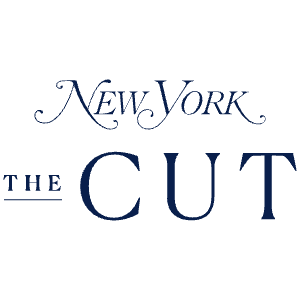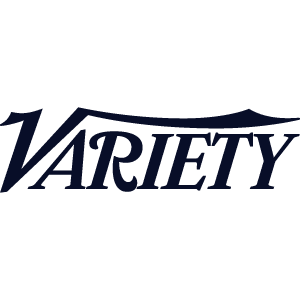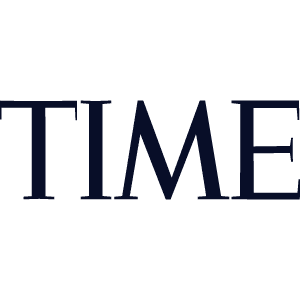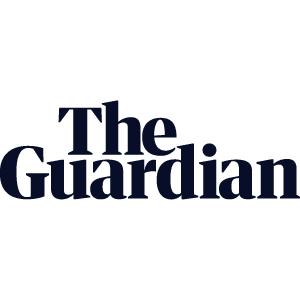Our Mission
Storytelling for Nature Preservation
We are a community of scientists, storytellers, journalists and filmmakers who are dedicated to the wild, and specifically the Great African Seaforest.
We advocate for the healing of our planet by connecting people to nature through our science-based immersive storytelling.
“I need no convincing that an ecosystem such as this is of inestimable value & must be protected.”
SIR DAVID ATTENBOROUGH
Our Projects
Inspired by Nature
Supported by Science
Guided by Indigenous Wisdom
All our work is based on our connection to the Great African Seaforest. This underwater forest is a deep source of inspiration for our minds, souls and hearts. By sharing these experiences with the world, we hope to inspire a global movement of nature connection and more stories about the intrinsic relationship between humans and the living planet.
Films
World-class films are an integral part of our content. We tell immersive, personal stories about people and nature, to a global audience. Our films include the Netflix Original My Octopus Teacher; Older than Trees – a film about the future of sharks and rays, and our newest feature documentary Pangolin: Kulu’s Journey about a special baby pangolin.
Books
Our Sea Change book has been republished as Underwater Wild, and we released a children’s book, A Journey Under the Sea. Craig Foster’s new book Amphibious Soul about “Finding the wild in a tame world,” based on his own ‘rewilding,’ is available to purchase.
Exhibitions
Sea Change Project collaborates on multimedia exhibitions that convey the story of our interconnectedness with the natural world. Showcasing the latest research on the origins of Homo sapiens while raising awareness for the Great African Seaforest and kelp forests worldwide. Visit the Origins exhibit at Cape Point, De Hoop Nature Reserve and most recently at Stillbaai.
Education
Having a connection to nature is everyone’s birthright. It is often said we must leave a better planet to our future children but we need to also leave better children to become custodians of this living world and for that we need nature education. We are committed to sharing our love and knowledge of the Great African Seaforest, and nature as a whole, with as many people as we can reach to inspire a sea-change.
Science
Science guides all our work at Sea Change. We conduct biodiversity research and collaborate with academic institutions to uncover the secrets of the Great African Seaforest. Through our 1001 Seaforest Species project, you’ll encounter the extraordinary creatures of this underwater ecosystem and discover their remarkable stories. This project blends science, underwater tracking, and storytelling to illuminate the hidden world of the Seaforest.
Podcasts
Our podcast series Back to the Water, hosted by Zolani Mahola and Pippa Ehrlich, asks what it means to be disconnected from nature and one’s culture – and what happens when you reconnect. The first episode of Back to the Water, “More Than One Octopus” premiered at Tribeca Festival, winning in its category, and available on all podcast platforms.
PATRON & AMBASSADOR
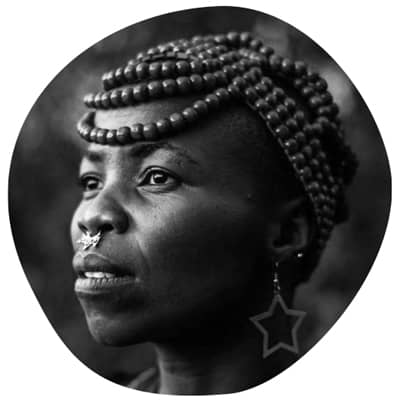
Zolani Mahola
Vocalist, Actress & Nature Activist
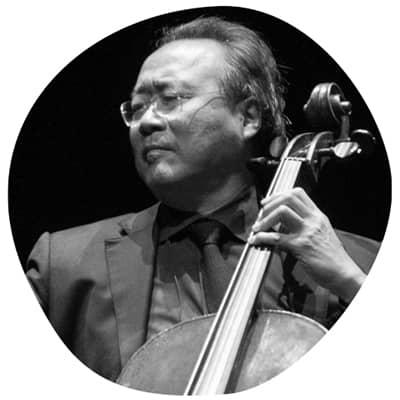
Yo-Yo Ma
Cellist
YOU CAN MAKE A DIFFERENCE
Preserve the Great African Seaforest
Kelp forests are highly productive near-shore marine ecosystems. They are biodiversity hotspots, sequester carbon, release oxygen and slow coastal erosion. They are found on 30% of our world’s coastlines and are one of the most vulnerable marine ecosystems to the climate emergency.
Our first goal was to make the Great African Seaforest a global icon and bring attention to the world’s kelp forests. With your help and support following the success of My Octopus Teacher, we achieved this.
In this time of environmental upheaval and biodiversity loss, we need to keep ensuring the long-term preservation of the Great African Seaforest. You can help by continuing to support our work in reminding people of their intrinsic connection with nature.
WHAT YOU CAN DO
Take Action
Lack of knowledge and awareness, and our human impact on this planet, are at the root of all threats to the Great African Seaforest and our global kelp forests. We are in the ocean every day, learning the secrets of the seaforest and finding stories that inspire people to reconnect with nature.
We hope our stories, knowledge and love of this environment can remind us that we are part of the natural world and motivate action that allows the living planet to thrive and regenerate itself.
To help us ensure the long-term preservation of the Great African Seaforest and to raise awareness for kelp forests globally, please watch, donate and share.
Social
#0034 Sunburst soft coral – Malacacanthus capensis
When you’re one-of-a-kind, your uniqueness deserves recognition. That’s exactly the case for the Sunburst soft coral, whose tall, cylindrical stalk sets it so far apart from other octocorals that scientists recently placed it in its own family. These rounded balls bearing yellow-to-orange polyps, each with eight pinnate tentacles, are found only in South Africa, from the subtitdal to depths of about 40 metres. The polyps can be retracted into the head when disturbed – and, in another display of special behaviour, a specialised polyp called a siphonozooid acts like a pump, reinflating the colony into the golden fuzzball that delights those who come across it.
@saveourseasfoundation #1001species #1001seaforestspecies #1001speciesproject #greatafricanseaforest #taxonomy #marinescience

Being a marine scientist in the field requires a host of attributes: eagle eyes to spot tiny animals; an excellent memory that can quickly rake through years of accumulated knowledge to identify a species; endless curiosity to piece together seaforest puzzles; patience and persistence – and, in this case, the ability to descend to the seabed with the elegance of a yogi. On a recent dive, Jannes spied a small sea cucumber on a stretch of rippled sand. While most people might have swum past it, thinking it was just another Stephenson’s sea cucumber, Jannes’s science brain knew there was something different about it. Instead of dendritic, tree-like, soft-tipped tentacles for filter-feeding, it had shorter, stubby ends to probably catch other types of prey. After dipping down numerous times to examine it with a torch, he declared it a species he had not seen before, and it would require some digging to figure out the mystery. This quest for answers is just one of the reasons the seaforest keeps calling Jannes back – every dive comes with the possibility of newness and surprise.
#seachangeproject #greatafricanseaforest #taxonomy #marinescience #seacucumber #1001species #1001seaforestspecies

#0033 Cape gannet – Morus capensis
Cape gannets plunge-dive from heights of up to 20 metres – or rocket straight down from the surface – spearing through the water with powerful bills. To cope with the rush of water, they’ve evolved a unique trait: no external nostrils. Instead, these seabirds have a specialised respiratory system that includes air sacs and internal passages – a design that makes perfect sense once you see them in action. These blue-eyed birds dive with precision, power and speed, often in large groups, feeding on shoals of pelagic fish. During the winter months, the famed Sardine Run occurs along South Africa’s east coast, where gannets join dolphins, whales, seals and other predators in a spectacular feeding frenzy. The breeding range of Cape gannets is limited to Southern Africa, with colonies in South Africa and Namibia. While numbers have risen in South Africa, Namibian colonies have declined sharply over the past 50 years, linked to dwindling fish stocks. Could this contrast reflect variants in policy, conservation efforts or ecosystem management? And, if so, what could be done differently?
Images: Jannes Landschoff and @animal_ocean
@saveourseasfoundation #1001species #1001speciesproject #1001 #seachangeproject

‘As I was standing on the cliff at Gifkommetjie, I could feel the connection moving through the air. I sensed the presence of my people, as if their footprints were still fresh, moving through the rocks.’
Read our latest blog about two groups of young people reconnecting with nature and their roots through coastal tracking. Link in bio.
@khwattu @lawhillmaritime #seachangeproject #natureconnection #tracking #immersion #ocean

#0032 Four-coloured aeolid – Godiva quadricolor
Flamboyant and not averse to overseas travel, Four-coloured aeolids are real charmers, attracting divers and underwater photographers with their flame-like cerata and bold orange-patched head. Unfussy gourmands, these nudibranchs are voracious predators of other heterobranchs and Striped anemones – and even cannibalise their own kind. Baby aeolids emerge from untidy egg ribbons that resemble zigzags of white rice, and settle on sand, reefs, and in kelp and green seaweed beds. Some even travel further afield, turning up as invasive guests in Mediterranean and Australian harbours. From reef to harbour, this flashy traveller shows how marine species can shape – and sometimes disrupt – environments.
@saveourseasfoundation #1001seaforestspecies #1001species #seachangeproject #marinebiology #taxonomy #greatafricanseaforest

A roundup of positive news from across the globe — glimmers of hope during challenging times.
#seachangeproject #biodiversity #climate #motherearth #hope #togetherwethrive

Without nature, we are nothing. Without nature, we have nothing. One can’t do business or life amid ruins. We need a mindset shift among those who make decisions — decisions that impact all of us and our home planet. And we need it soon, as there is no time to lose.
#seachangeproject @brodie_rudolph_tanya #g20 #o20 #policy #climate #ocean

#0031 - Janbruin - Gymnocrotaphus curvidens
Bucktoothed and blue-eyed, this seabream is a shy loner, often found sheltering in overhangs and caves. Its eyes are startling – bright turquoise against the coppery-brown colour of its skin, and those protruding teeth come in handy for tearing prey such as tunicates, algae, bryozoans, worms and crustaceans from rocks. A large, plump seabream part of the Sparidae family, Janbruins are diurnal – active during the day and resting at night. Not much is known about the life history and longevity of these handsome fish. Like the reproductive cycle of other members of the family, Janbruin eggs are presumed to develop in the plankton, and they may be one of the seabreams that changes sex as they grow. There’s still a lot to learn about these blue-eyed fish … perhaps with timidity comes more privacy?
@saveourseasfoundation #1001seaforestspecies #1001speciesproject #1001species #greatafricanseaforest #seachangeproject #taxonomy #marinebiology

#0030 - Formidable shore spider - Desis formidabilis
With a name worthy of a Marvel villain, this intertidal spider is actually a survival superhero. Besides its huge fangs, which make up about a third of its body length and enable it to successfully hunt small crustaceans, it has two other unique survival tools. First, its silken nests – constructed by a single female in crevices and under the empty shells of mussels and limpets – are like biological scuba tanks. Air trapped in these nests allows the spider to shelter there during high tide. When the tide recedes, and night falls, they emerge to hunt for their favourite crustaceans – isopods and amphipods. Their second tool involves eggs and a smart decoy. The female spider lays a series of wedge-shaped sacs in the nest – but not all of them contain eggs. It’s thought that the extra sacs act as red herrings to reduce the likelihood of egg parasitism by the Shore spider egg-parasite wasp Echthrodesis lamorali. Air in their nests, air in their sacs – Spiderman would be super-impressed.
@saveourseasfoundation #1001species #1001seaforestspecies #taxonomy #marinescience #biodiversity #formidableshorespider #seachangeproject #saveourseasfoundation

In the age of extinction, any news of a species making a comeback is an excellent thing. Green turtles have been reclassified from endangered to least concern by the IUCN. Globally, this is great news, however it must be borne in mind that certain populations in some places locally might still be vulnerable or threatened. The reason for the reclassification was due to a 25% bounce-back in population numbers. This is a great example of what protection of not just the species but its nesting beaches can do. Like the other sea turtles, green turtles are vulnerable to climate change, poaching, trawling and net entanglements, and loss of habitat — not just their beaches but the seagrass beds that are their predominant sheltering and feeding grounds.
Image: @swatithiyagarajan
#iucn #greenturtles #preservation #biodiversity #endangered #seachangeproject @darrosresearchcentre

#0029 - Broad chiton (Callochiton dentatus)
Meet the Broad chiton, a dorsally flattened mollusk endemic to South Africa’s intertidal zones. This low-profile grazer is a master of survival, equipped with a powerful muscular foot that anchors it to substrates, and a compact form that reduces drag in turbulent waters. Ranging in size from 20-55mm in total body length, Broad chitons have eight shell plates surrounded by a soft fleshy mantle, and dark spots, or ‘shell eyes’, on the side areas and growth lines. Solitary and herbivorous, these orange- to chestnut-hued animals use a radula – a tongue-like structure lined with rows of teeth – to scrape algae off rocks. First described by Danish naturalist Lorenz Spengler in 1797, the Broad chiton belongs to an organism group that has lived in our oceans for millions of years. Chitons trace back to the earliest lineages of mollusks, yet their design is anything but simple – their teeth are made of magnetite, the hardest material made by a living organism, and their ‘shell eyes’ have a crystalline lens and a pigmented photoreceptive retina.
@saveourseasfoundation #seachangeproject #1001species #1001seaforestspecies #1001project #greatafricanseaforest #taxonomy #marinebiology #chiton

More than ever, our planet needs us to shift our thinking, speak up, challenge the extractive status quo, and collaborate to push for change. One group of law students did just that. Subscribe to our latest newsletter to read their story. Link in bio.
@pisfcc #seachangeproject #icj #climatecrisis #mothernature #ocean #activism

